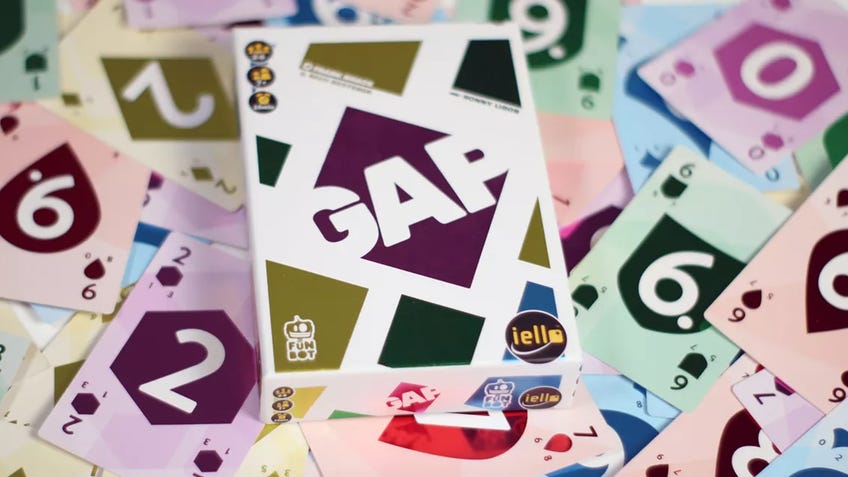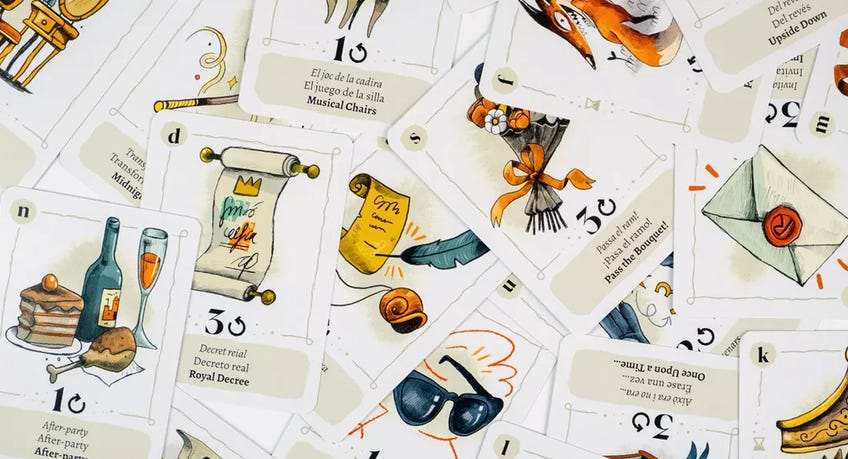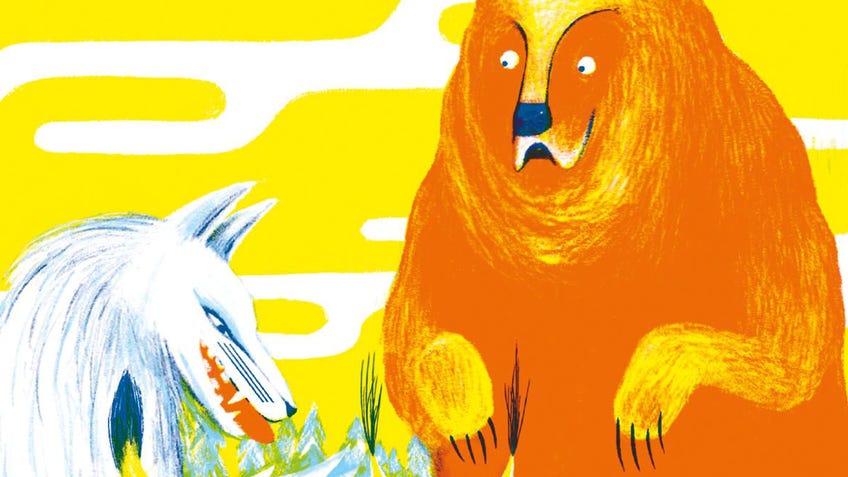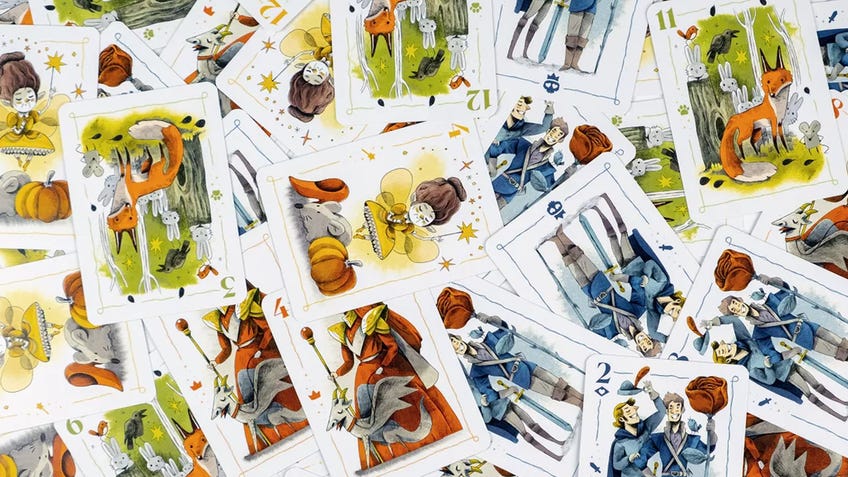5 best hidden gem board games we played at Essen Spiel 2023
Size isn’t everything.
Essen Spiel is a board game convention at which the most hyped and anticipated titles are often also the largest. A lot of attention is paid to big boxes containing complicated and lengthy eurogames – tabletop titles that usually feature gameplay mechanics like resource management and worker placement.
This is a shame because some of the best finds at Essen Spiel are smaller in size, shorter in length and less expensive. They’re also a lot easier to play while at the show because the wait times for a demo aren’t as long.
This year’s Essen Spiel 2023 convention had plenty of smaller board games hidden amongst all the bigger titles, from beautiful little card games to nifty block-placing games.
Here are some of the best hidden gems we discovered at the world’s biggest board game convention.
Best hidden games at Essen Spiel 2023
1. Gap
Collect cards and trip up your opponents in this quick board game

Dicebreaker has always been a fan of card games that involve brutally screwing over your opponents – think 6 nimmt! and No Thanks! - and Gap might just be our new favourite entry into this category. Published by Arcane Wonders and co-designed by Rico Besteher and Frank Noack, Gap is a card game for two to six players in which people compete to have the highest score by collecting cards of different suits.
At the beginning of the game, players receive a hand of cards that they’ll use to acquire additional cards to place in front of them. Playing a card that matches the numbers of one or more cards in the middle row will see players picking up every matching number card. Whereas playing a card that is adjacent to one or two cards in the row will have players picking up those one or two cards.
Players arrange their collected cards in columns of matching suits throughout the round. Players then score points at the end of each round by adding together columns with the same number of cards in them, before subtracting the combined number of cards in the smallest columns. For example, earning a score of three by subtracting three lone cards from two columns of six. Any columns containing a number of cards between the largest and smallest columns will not count towards a player’s score.
Gap is a deliciously mean card game with low enough stakes to make it really fun.
2. Rebel Princesses
Players will want to avoid princes taking - especially the one hidden in the frog

The most striking thing about Rebel Princesses is its artwork, created by Alfredo Cáceres for the publisher Zombi Paella. Featuring a collection of iconic characters from across the history of fairy tales and folklore – including Sleeping Beauty, Snow White and Mulan – Rebel Princesses is a card game about a group of young women who don’t want to be married.
Players can choose between a selection of different princesses, each with their own unique powers. Everyone then competes in a series of five rounds, each representing one of the five days of an epic party that princes aren’t invited to. However, this hasn’t stopped them from attempting to sneak in. As a trick-taking card game, every round starts with one player ‘leading’ with a card from a suit of their choice. Every other player will then need to play a card from the matching suit if they have one in their hand.
If they don’t, that player can choose to play a prince card instead, thereby forcing whichever player who wins the trick – by playing the highest-numbered card of the suit that was played by the leader – to pick up the card(s). Each round continues like this until players are out of cards, with the winning player being whoever is left with the lowest number of prince cards by the end of round five.
Though not reinventing the wheel when it comes to trick-taking games, Rebel Princess offers another neat spin on the genre.
3. Coral
This game has players piling up blocks to ensure theirs' stay ontop of the reef

Designed by Tangi Tabuteau and published by Black Box Adventures, Coral is a block-stacking board game about building coral reefs. Over the course of several rounds, players take turns to place blocks of different colours and patterns, with the goal of having as many of their own blocks visible when the structure is viewed from above by the end of the game.
The trick is that players won’t just be placing blocks of their own chosen player colour and pattern, but those of their opponents too. At the beginning of the game, players will share a block of their own player colour and pattern with each of their opponents, before placing one themselves. The game then progresses with players either placing a block or moving their player piece along a connected line of their own blocks’ faces within the reef.
Players can place a block onto another that is adjacent to their player piece, meaning moving it around the reef will give players more options with where they can put blocks. Using opponents’ blocks to get a leg-up on the competition and reach higher ground is the aim of the game in Coral, especially as the rounds move very quickly and the reef piles up fast.
A satisfying experience of placing and moving various wooden pieces, Coral is simple but still gets your brain working.
4. Itten Funbrick Series
These three board games are part of a collection of titles that are short-but-sweet.

Itten is a Japanese publisher perhaps best known for the block-placing board game Tokyo Highway. The company had perhaps its largest-ever presence at Essen Spiel this year, joining forces with fellow Japanese studios Oink Games and Saashi and Saashi to demo its Funbrick Series of small games.
Like many of Itten’s titles, the Funbrick Series sees players using a wide variety of tactile components in each game. The series includes several entries - we got our hands on just a few of them at Essen Spiel 2023 and wanted to highlight them here.
Viking See-Saw is a balancing game designed by the one and only Reiner Knizia, one of the most prolific tabletop creators in the industry and the mind behind Lost Cities and The Quest for El Dorado. Viking See-Saw has players taking turns to place one of their components onto a balancing boat, with the goal of not causing anything to fall off or the other side of the boat to drop. The first player to have placed all their pieces is the winner.
Another game in the Funbrick series is 3-Second Try, a fast-moving challenge game in which players take turns to bet how many times they can do a particular action, or how many answers they can give to a certain question, within the three seconds it takes for a marble to roll down a little pathway.
The last is Judge Domino, a game that sees players placing dominos of different shapes and sizes in a line, before betting whether they think the path of dominos can be successfully knocked down in a chain.
The playtime on each of these games is incredibly short, but they provide the kind of gameplay experience that will be unique enough to remain memorable.
5. Prey Another Day
Eat other animals and hide from bigger predators in this small card game.

Co-designed by Village Rails co-creators Brett J Gilbert and Matthew Dunstan, Prey Another Day is a quick card game that’s memorable for more than just its witty name. In the game, every player will have the exact same hand of cards, with each one being based around a different animal. All of these cards – just like their real-life counterparts – have a particular place in the food chain and will exercise their respective rights as predator animals by consuming those creatures beneath them.
Every turn has players secretly selecting a card from their hand, with the hope of it not being ‘eaten’ by another card that’s higher in the chain. Once players have chosen their cards, they begin revealing them in order: starting from the lowest number - the bear - to the highest number, the mouse. If a player is the only one to pick a certain card, they’ll have the opportunity to pick another card that’s lower in the chain to ‘eat’. If a player or players have the chosen card, they must reveal it and are eliminated for the rest of the round.
Surviving enables players to place their card in front of them and remain in the round. After three turns, whichever player has the highest total of points from the cards in front of them gets some tokens, as well as any player who has ‘eaten’ another card. The player who has the most tokens by the end of the game is the winner.
Alongside its striking artwork, Prey Another Day’s gameplay definitely makes it worth checking out.



